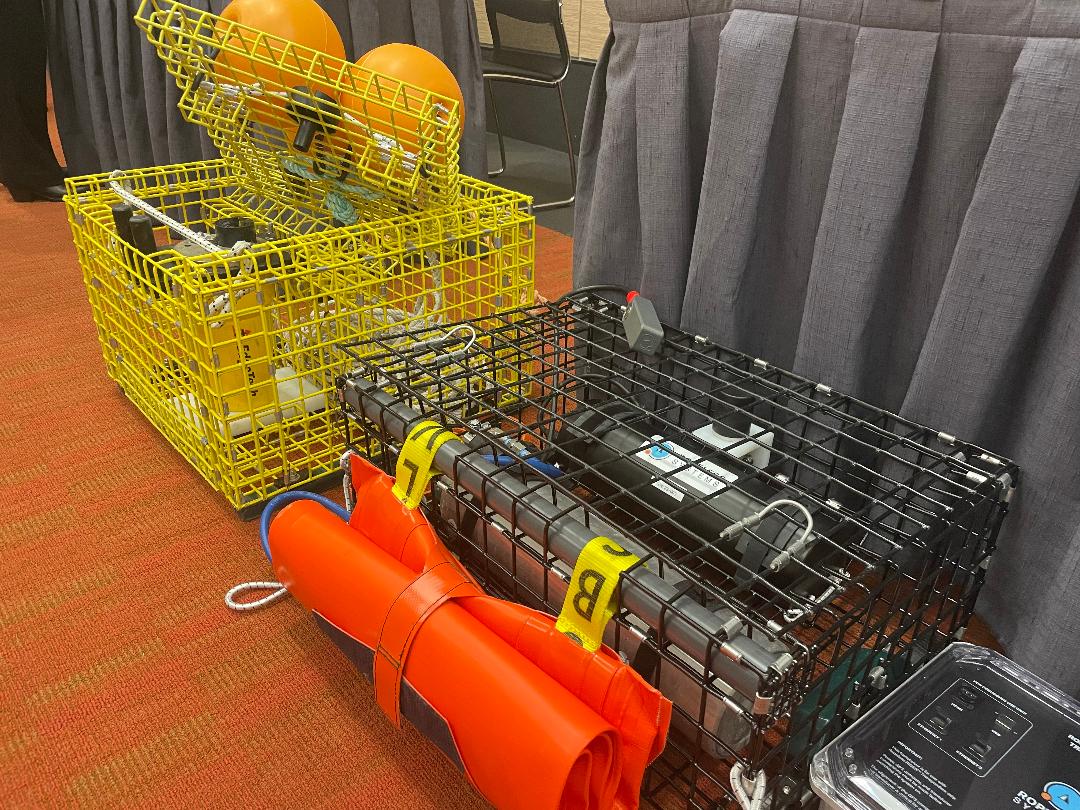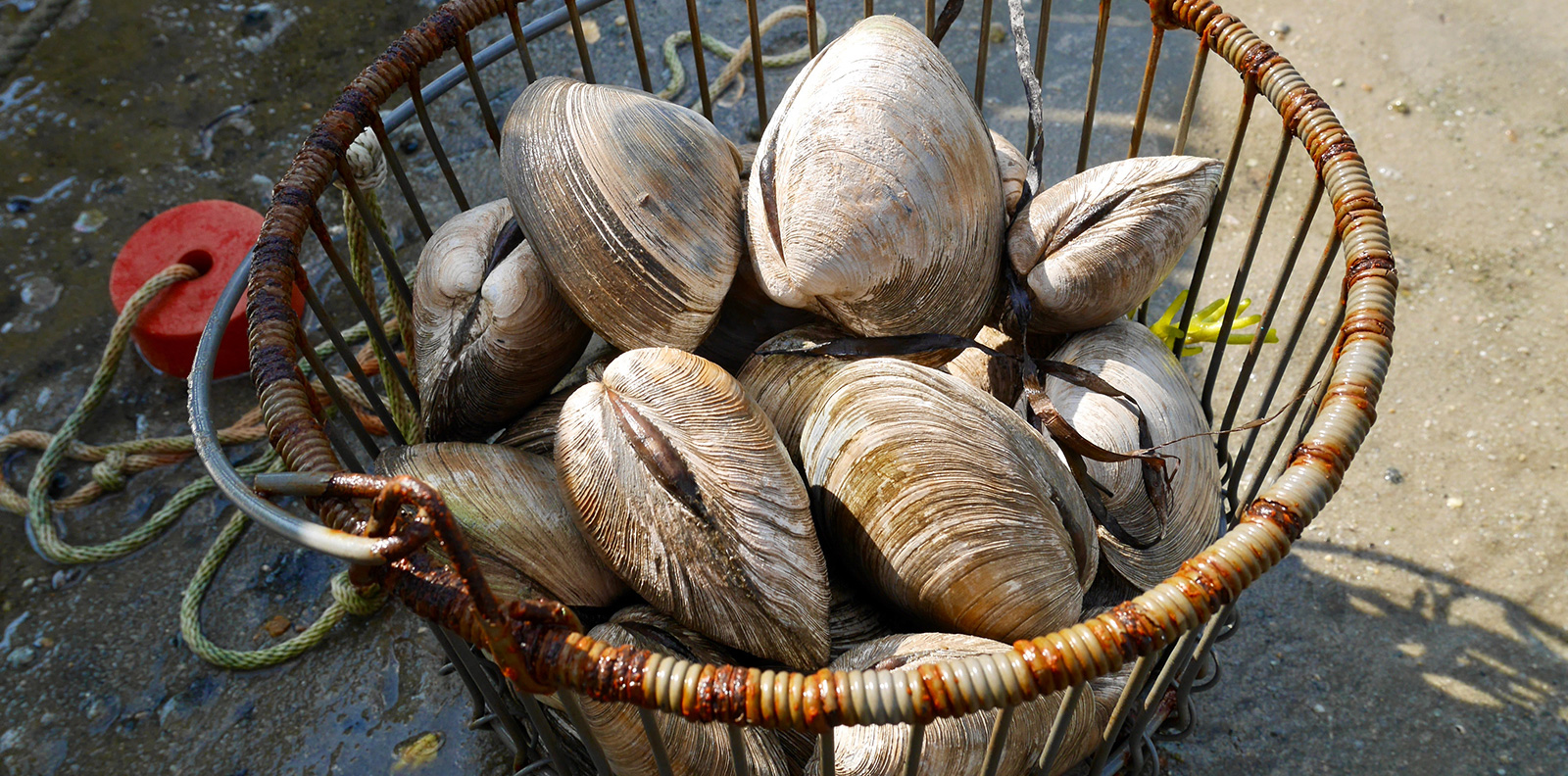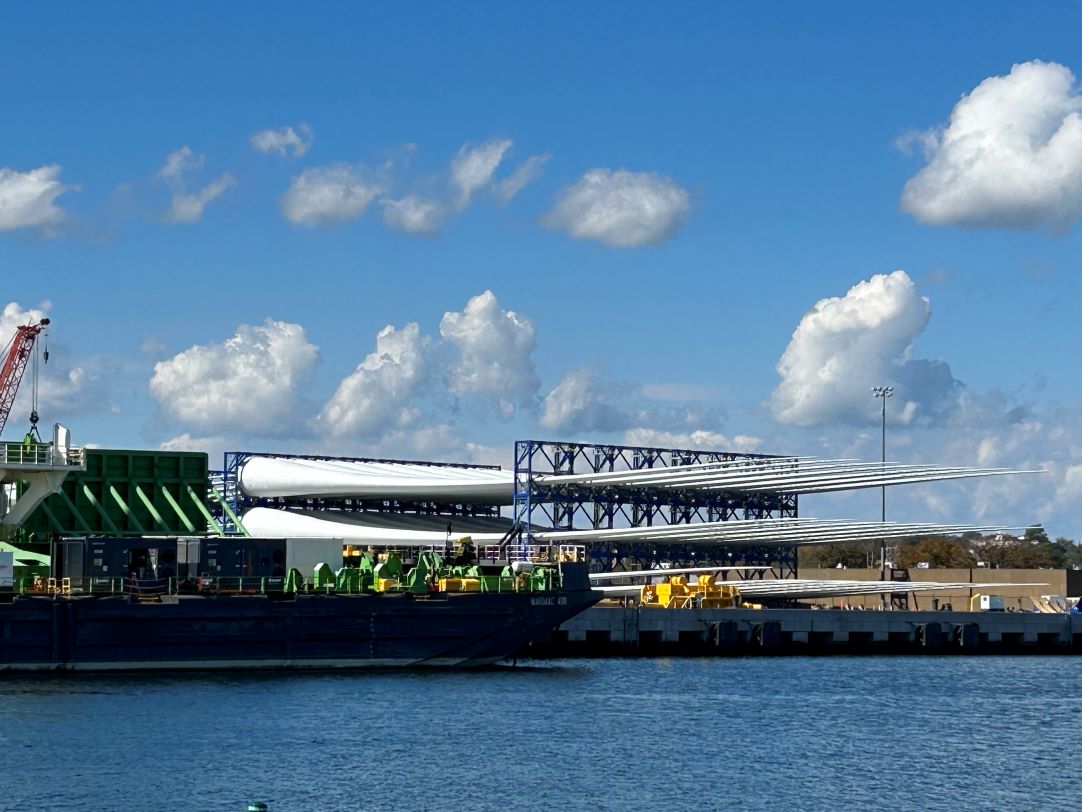Lower Providence River is Clean Enough to Quahog, and Fish are Fair Game, Too
June 23, 2021
PROVIDENCE — Years of work and millions of dollars in investment are paying off for the Providence River, and with it, fishing and shellfishing opportunities have increased.
This spring the Rhode Island Department of Environmental Management (DEM) opened the lower third of the Providence River to quahogging on a conditional basis for the first time in more than 75 years. And experts say the river is clean enough to fish, too.
“This is a tremendous day for Rhode Island that many never thought possible,” DEM director Janet Coit said in a statement last month. “The opening of these new shellfishing grounds is the result of water quality improvements from decades of intense efforts to clean up the Providence River and Narragansett Bay.”
Quahogging in the Providence River — which forms at the confluence of the Woonasquatucket and Moshassuck rivers, is joined downstream by the Seekonk River and becomes Narragansett Bay past Conimicut Point and Nyatt Point — has been restricted as far back as records go because of water quality issues related to stormwater runoff, industrial pollutants and wastewater overflows.
Shellfish health “closely mirror[s] that of their water environment,” according to Annemarie Beardsworth, who spoke on behalf of DEM and the Department of Health (DOH), which work closely together on issues relating to safe seafood harvesting. Quahogs, the official shellfish of Rhode Island, can be impacted by the accumulation of toxins related to marine algae and by fecal coliform bacteria that can enter the river with wastewater overflow.
Sixteen monitoring stations in the Providence River help public-health agencies keep up with changes in water quality and understand where hazards are located. Recent advances in environmental laws and wastewater treatment facilities have helped make the Providence River healthy for quahogs and for human consumers, according to DEM.
The “largest single contributing factor” in creating a shellfish-friendly environment, Beardsworth said, was the construction of the combined sewer overflow (CSO) storage tunnel 250 feet below the city of Providence by the Narragansett Bay Commission (NBC).
The 3-mile tunnel catches and holds stormwater in heavy precipitation events, according to NBC public affairs manager Jamie Samons.
After stormwater inflow has decreased, she said stored water is pumped back up to the water treatment facility at Fields Point to be treated and discharged into the river. Since going online in 2008, the tunnel has captured nearly 13 billion gallons of wastewater overflow that would have gone directly into the Providence River and Narragansett Bay without being treated.
“It’s entirely due to that project,” Samons said. “Over the past several years shellfishing closures have been relaxed all through the upper bay and now we’re into the Providence River and it’s because water quality has improved so much because of this.”
The tunnel and additional wastewater treatment updates have decreased post-storm bacteria concentrations in the Providence River by 41 percent, according to the NBC. These levels still increase in the Providence River after rain events of more than half an inch but return to normal after three to four days. Shellfish are safe to consume after an additional three-day waiting period, according to DEM.
“Our decades of work and investment in clean water … have real and meaningful impact for Rhode Island’s environment, public health and economy,” NBC chairman Vincent Mesolella said in last month’s statement. “And now, as the benefits move further up into the Providence River, even more, Rhode Islanders can enjoy access to clean water in their communities.”
On June 18, the NBC broke ground on an additional tunnel below Pawtucket and Central Falls which, according to Samons, should prevent overflows breaching the Seekonk and Blackstone rivers and further improve downstream water quality.
“The goal is to meet the requirements of the federal Clean Water Act of 1972, which is to make navigable waters of the U.S. fishable and swimmable,” Samons said. “And we’re getting closer and closer.”

The Providence River, however, will likely never be fully open to shellfish harvesting, according to Beardsworth, DOH’s internal communications manager. Federal requirements, she said, prohibit harvesting from waters that could be impacted by pollution sources and legacy contaminants left by old industry. The odds of shellfish intaking these pollutants grow in proximity to Providence.
It’s more likely that shellfish harvesting — restricted this summer to 27 mornings and dependent on the amount of recent rainfall — will eventually be allowed in a wider set of conditions, Beardsworth said.
However, DOH and DEM both give the go-ahead for the consumption of fish caught in the upper Providence River, provided anglers have the right licenses and catch within season and possession limits.
Back in 2012, ecoRI News reported uncertainties around fishing in the Providence River and other surrounding urban waterways.
DOH’s former chief of environmental health risk assessment Robert Vanderslice told ecoRI News then that no federal laws mandated the monitoring of fish toxicity and little funding existed to take on the issue.
The Environmental Protection Agency still hands water quality reporting over to state public health agencies, according to Dave Deegan, regional spokesperson for the EPA’s Northeast region.
Though Rhode Island’s biennial report on the State of the State’s Waters has grown more comprehensive in recent years, “insufficient information” is noted regarding fish consumption in the upper and lower Providence River in the state’s latest water report.
Beardsworth said DOH and DEM work closely to monitor fish toxicity, with funding through the Agency for Toxic Substances and Disease Registry and the Centers for Disease Control and Prevention (CDC).
In an elaborate partnership, DEM catches fish and works with Roger Williams University and the EPA’s Narragansett laboratory for toxicity testing. DEM then provides the lab results to DOH, which interprets the data and identifies any potential public risk.
If a public hazard were identified, DOH and DEM would issue a joint press release, notify stakeholders and issue a public-health advisory, something that hasn’t occurred “in many years,” Beardsworth said.
Anglers and shellfishers can also call DEM’s seasonal Bay Line to report any environmental issues or water quality concerns.
Though sewer overflows pose less risk to fish health, according to Beardsworth, the NBC also provides a map that gives real-time sewage overflow updates for the upper Providence River and its tributaries. The NBC notes “increased health risks from non-contact recreational activities,” including fishing, during rainstorms and up to 48 hours after sewage overflows.
DOH does hold some concerns about mercury and polychlorinated biphenyls (PCBs) in certain fish caught in the Providence River, according to Beardsworth. DOH advises weekly limits on fish consumption and recommends children and women who are or may become pregnant avoid shark, swordfish, bluefish and striped bass caught in Rhode Island.
But in most cases, Beardsworth said “the levels of pollutants are not high enough to outweigh the nutritional benefits of the fish themselves.”
Most fish caught in the Providence River aren’t “born and raised in that water,” which is added assurance that they’re healthy and safe to consume, according to John Lake, supervising marine biologist with DEM and contact for the state’s Marine Recreational Fisheries Program.
“A lot of the fish that you would catch up in the Providence River are fish that don’t reside there year-round,” Lake said. “Right now, actually, is a great time to go fishing for striped bass up in that area.”
ecoRI News staffer Brian P. D. Hannon contributed to this story.



